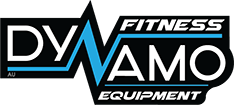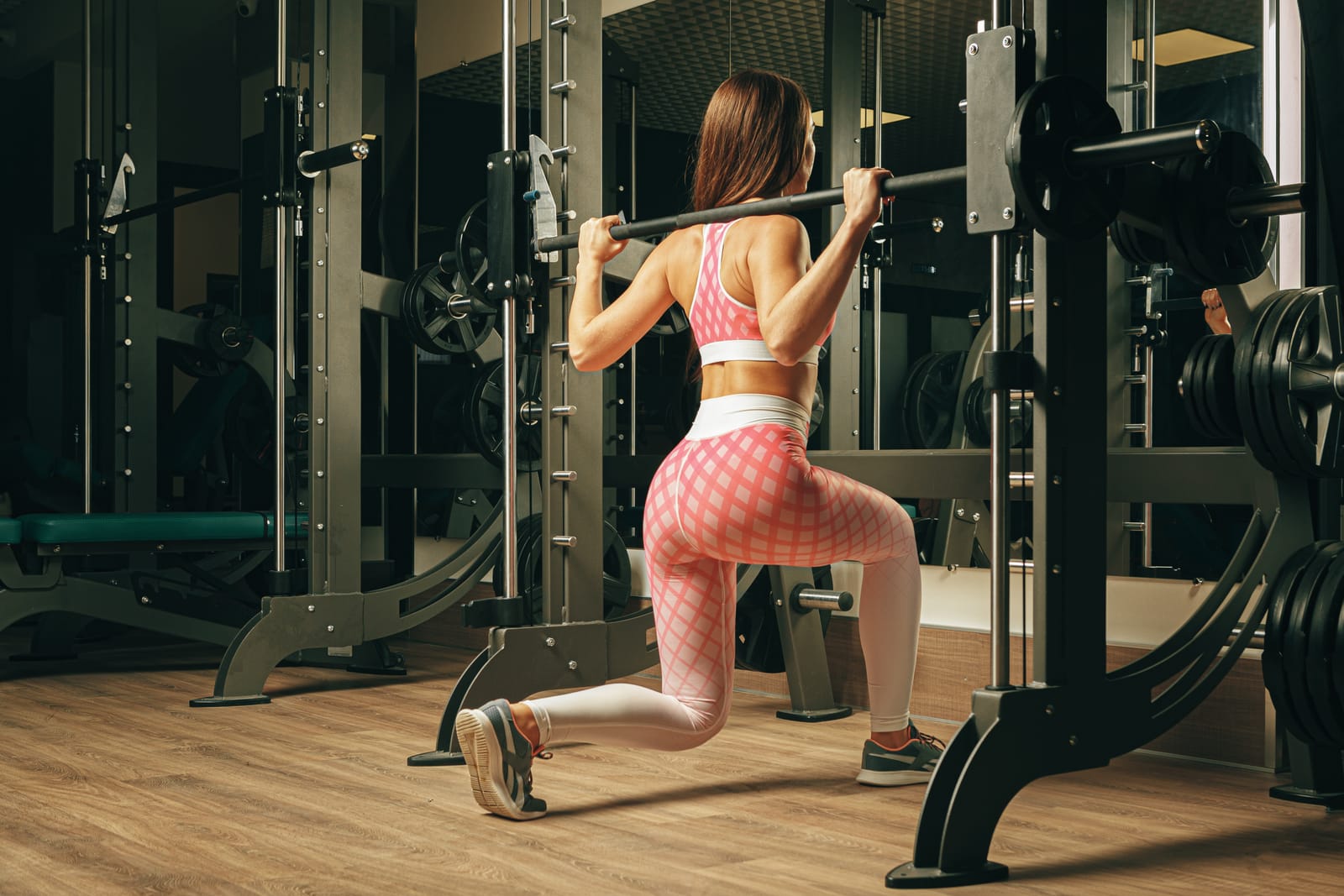
Are Weight Machines Worth It for Your Home Gym?
More people are building home gyms than ever. Convenience, flexibility, and long-term savings make it an attractive choice. But one question arises: should you invest in weight machines, or stick with free weights?
Some say weight machines are essential for structured workouts. Others argue free weights offer more versatility. So, what’s the best choice?
This article will break it down. We’ll cover the benefits and drawbacks of weight machines, key considerations, and recommendations. By the end, you’ll know whether weight machines are the right fit for your home gym.
The Growing Popularity of Home Gyms
More people want control over their fitness routine. No waiting for machines. No monthly gym fees. But, a personal space to work out anytime.
Gym memberships can be expensive. Over time, the cost adds up. A home gym saves money in the long run. It also eliminates travel time. More convenience means fewer excuses.
Health concerns have also driven this shift. Many prefer training at home instead of crowded gyms. They feel safer and more comfortable in their own space.
The right equipment makes all the difference. A well-equipped home gym supports progress. Weight machines, free weights, and resistance tools create a balanced setup.
What Are Weight Machines?
Weight machines are structured equipment designed for controlled strength training. Unlike free weights, they guide movements and provide stability. They help beginners and experienced lifters train safely and effectively.
Different machines serve different purposes. Some offer full-body workouts, while others target specific muscles. Let’s break down the most popular types.
Multi-Functional Trainers
Multi-functional trainers combine several workout stations in one unit. They allow users to perform multiple exercises without switching equipment. These machines typically include:
- Pulley Systems – Adjustable cables for exercises like lat pulldowns, chest flys, and triceps extensions.
- Smith Bar – A built-in barbell for squats, deadlifts, and presses.
- Leg Attachments – Features for leg curls, extensions, and calf raises.
They suit home gyms with limited space. Instead of buying separate equipment, you get an all-in-one solution. These machines provide a complete strength workout without clutter.
Smith Machines
A Smith machine includes a barbell fixed on steel rails. It moves in a vertical or slightly angled path. Unlike a free barbell, it does not require balance.
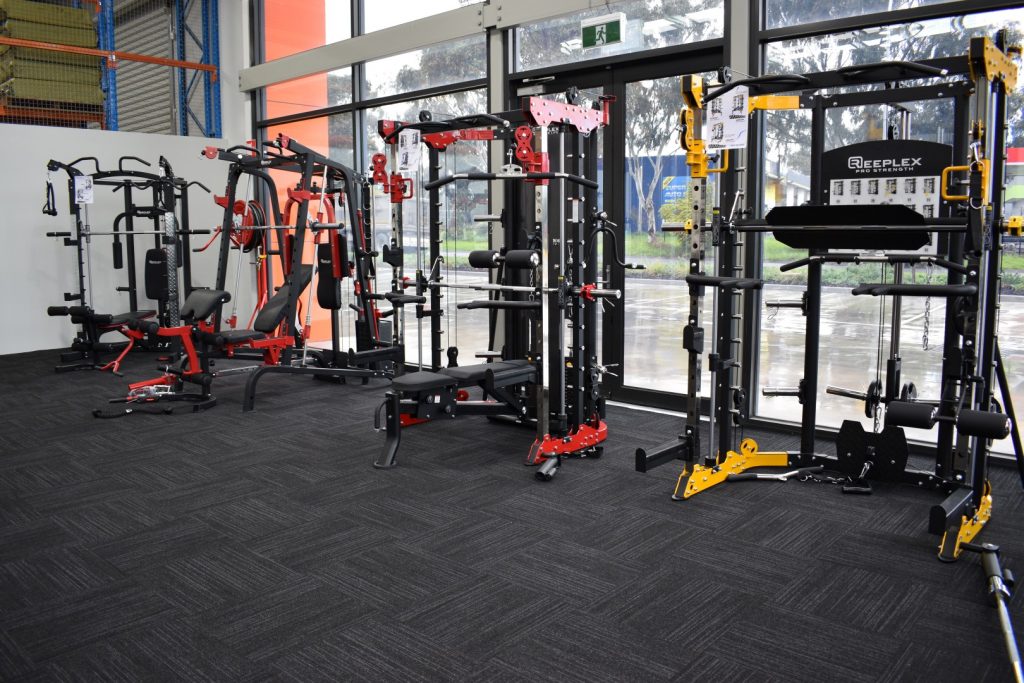
Why is this helpful?
- Safety First – The guided motion reduces the risk of losing control. Built-in safety stops let you lift alone without a spotter.
- Better Form – The fixed path helps maintain proper technique, especially for squats and presses.
- Great for Heavy Lifting – You can push limits without worrying about dropping the bar.
However, it limits natural movement. Unlike free weights, the fixed track does not engage stabilizing muscles as much. Still, for controlled, heavy lifting, it’s an excellent choice.
Cable Machines
Cable machines use adjustable pulleys with weight stacks. They offer smooth, continuous resistance. Unlike fixed-path machines, they allow for natural movement.
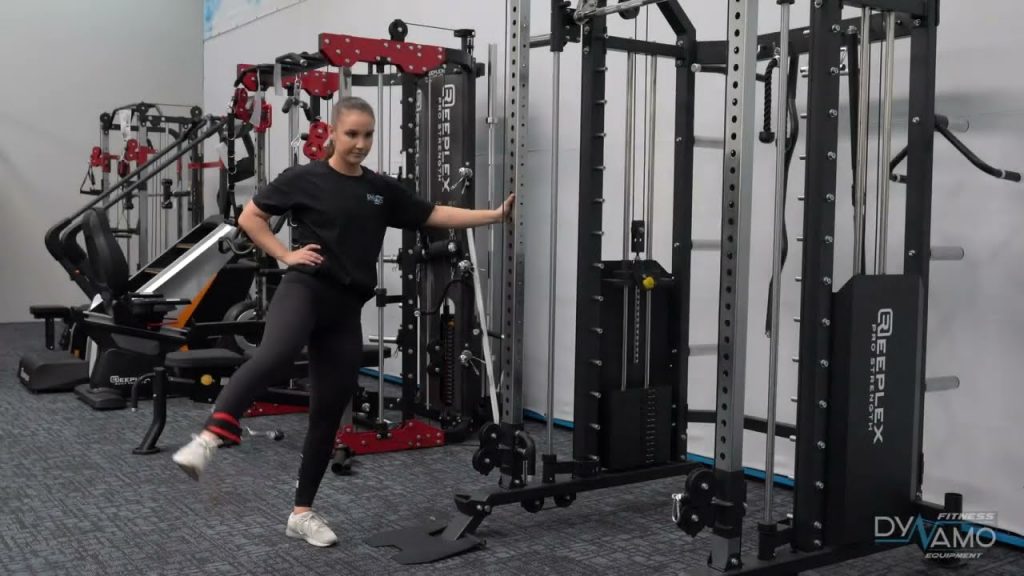
Key Benefits:
- Versatility – Perform endless exercises for different muscle groups.
- Constant Tension – Unlike free weights, cables provide resistance throughout the entire motion.
- Adjustability – Set pulleys high or low for different angles and movements.
A cable machine fits all fitness levels. They work well for isolation exercises, functional training, and rehabilitation. If space allows, they are a valuable addition to any home gym.
Leg Press Machines
A leg press machine targets the lower body. It focuses on the quadriceps, hamstrings, and glutes. Unlike squats, it removes stress from the lower back.
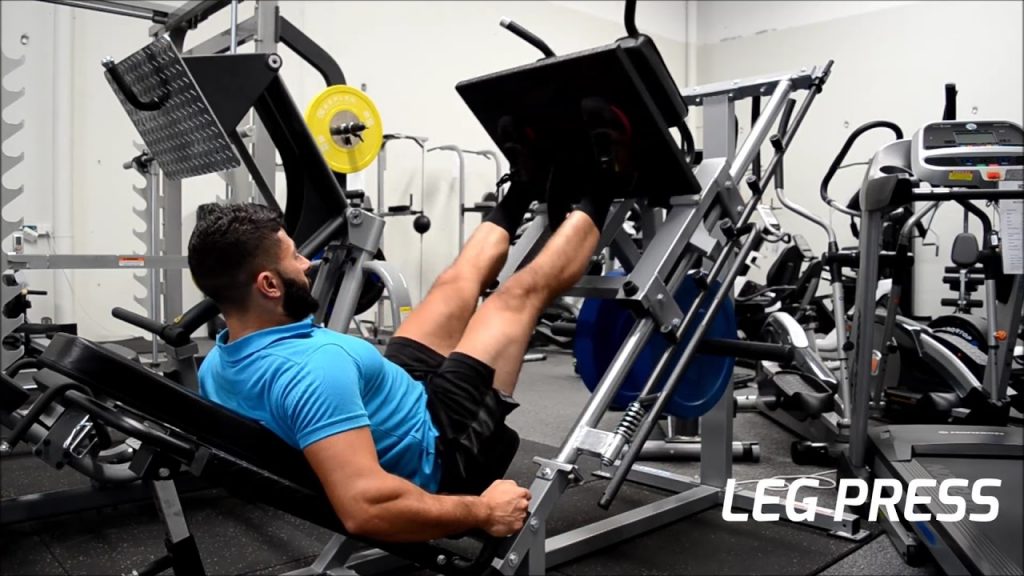
There are two main types:
- 45-Degree Leg Press – The seat reclines while the platform moves diagonally. This version allows for heavy lifting with controlled movement.
- Seated Leg Press – The platform moves horizontally. It provides a safer option for beginners and those with mobility concerns.
Why Choose a Leg Press Machine?
- Back Support – The padded seat supports the lower back, reducing strain.
- Muscle Isolation – It targets the legs without engaging the core or upper body.
- Safe Heavy Lifting – No need for a spotter. The controlled motion prevents loss of balance.
A leg press is ideal for those focusing on leg strength. It offers an effective way to build power without stressing the spine.
Compact Home Gym Stations
A compact home gym station combines multiple exercise options in one unit. It suits small spaces while providing a full-body workout.
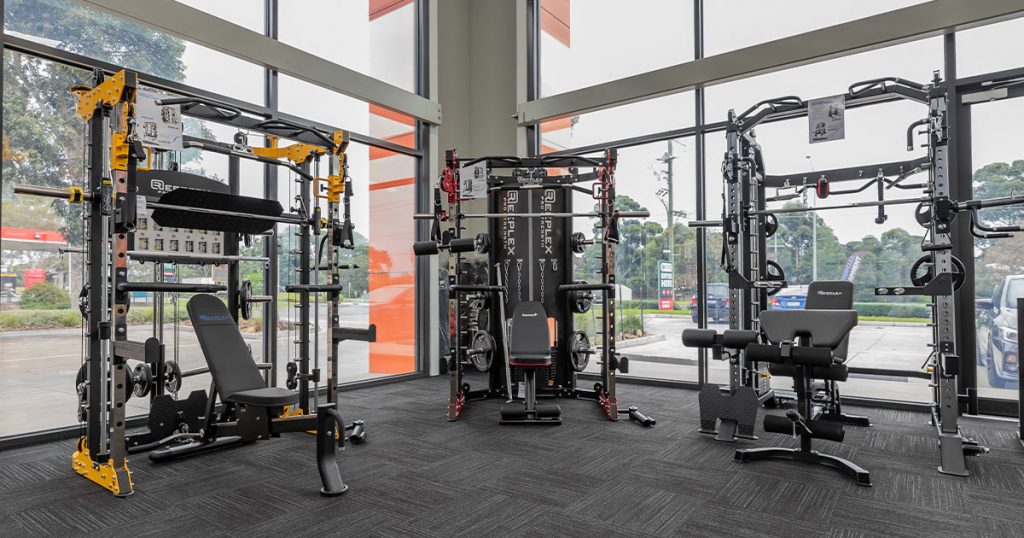
Common features include:
- Adjustable Weight Stacks – No need to change plates manually. Simply adjust resistance with a pin.
- Multiple Exercise Stations – Includes a lat pulldown, chest press, leg extension, and more.
- All-in-One Design – Saves space while covering strength training essentials.
Benefits of Compact Home Gyms:
- Versatile Workouts – Perform upper, lower, and core exercises in one spot.
- Space-Saving – Eliminates clutter while maximizing functionality.
- Beginner-Friendly – Guided movement helps maintain proper form.
These machines are perfect for those who want variety without multiple pieces of equipment. They offer a structured and efficient home workout experience.
How Weight Machines Differ from Free Weights and Resistance Bands
Each training method has unique benefits. The right choice depends on fitness goals, experience, and available space.
Weight Machines vs. Free Weights
Weight machines provide a guided path. The movement stays controlled, reducing injury risk. They isolate muscles and ensure proper form, making them ideal for beginners.
Free weights engage more muscles. They require balance and coordination, strengthening stabilizers. While they offer greater movement variety, they demand proper technique. Lifting heavy weights without a spotter can be risky.
Weight machines suit those who want structured, safe workouts. Free weights work best for those focused on functional strength and athletic training.
Who Benefits More?
- Weight machines suit beginners, injury recovery, and structured strength training.
- Free weights are better for athletes, functional strength, and muscle engagement.
Weight Machines vs. Resistance Bands
Resistance bands add variety. They create tension without bulky equipment. They work well for mobility, rehabilitation, and warm-ups.
Weight machines provide stable resistance. They allow for progressive overload with precise weight adjustments. Unlike bands, they don’t lose tension over time.
Machines are better for strength-building and consistency. Bands are great for flexibility, joint support, and travel-friendly workouts. Using both can create a balanced routine.
Key Differences
- Resistance Levels – Machines provide fixed weights; bands increase tension as they stretch.
- Portability – Bands fit in a bag; machines stay in one spot.
- Muscle Activation – Bands improve joint mobility; machines target specific muscles.
Drawbacks & Limitations of Weight Machines
Weight machines offer safety, structure, and ease of use. But they are not perfect. Before investing, it’s important to consider their limitations.
1. Initial Cost Investment
Weight machines are expensive. A high-quality home gym system can cost hundreds or even thousands of dollars. Unlike free weights, which can be bought gradually, machines require a bigger upfront investment.
Budget-friendly alternatives exist. Resistance bands cost a fraction of the price and still build strength. Adjustable dumbbells offer versatility without taking up space. If money is tight, these options provide effective workouts without breaking the bank.
However, machines last longer. They are built for durability and heavy use. A well-maintained machine can serve for decades, making it a long-term investment rather than an expense.
2. Limited Functional Movement
Weight machines guide movement along a fixed path. This helps with control but reduces natural motion. Unlike free weights, machines do not engage stabilizing muscles as much.
Real-life activities require balance, coordination, and flexibility. Free weights and bodyweight exercises train muscles to work together. This improves functional strength, making everyday movements easier.
Machines also focus on isolated muscle groups. This can create imbalances if not paired with free weights or bodyweight training. Athletes and advanced lifters often prefer free weights for better muscle engagement.
Still, weight machines have value. They allow for targeted muscle growth and controlled resistance. But for a well-rounded fitness routine, mixing in free weights and functional exercises is a smart approach.
3. Space Requirements
Weight machines take up space. Unlike dumbbells or resistance bands, they can’t be stored in a corner or under a bed. Some machines require a dedicated workout area.
A full-sized multi-station gym needs significant room. Even a single Smith machine or leg press can dominate a space. This can be a challenge for those with small apartments or limited workout areas.
But there are solutions. Compact home gym stations offer multiple exercises in a smaller footprint. Foldable machines save space when not in use. Before purchasing, measuring available space ensures the right fit.
If space is tight, consider mixing machines with free weights or resistance bands. This allows for a complete workout without overcrowding a room.
Lack of Variety in Workouts
Weight machines limit movement. They focus on specific muscle groups but may not train the body as a whole. Free weights and bodyweight exercises offer more dynamic, full-body engagement.
With dumbbells, you can move freely, change angles, and engage stabilizing muscles. A single barbell allows for squats, deadlifts, and presses—all essential for strength and athletic performance.
Machines follow a fixed path, which can become repetitive. Over time, the body adapts, reducing progress. To avoid plateaus, combining machines with other equipment is key.
A well-rounded routine includes:
- Machines for muscle isolation and controlled strength training.
- Free weights for functional movement and stability.
- Resistance bands for mobility and flexibility.
Mixing training styles prevents boredom and improves overall fitness. Machines are useful, but they work best when paired with other tools.
Who Should Invest in Weight Machines for Home Gyms?
Weight machines are not for everyone. They offer structured, safe workouts, but they come with limitations. Knowing whether they fit your needs can save time, money, and space.
Best Suited For:
1. Beginners Looking for Structured Workouts
Machines provide guided movement. No need to worry about balance or form. They help beginners build strength safely and effectively.
2. Individuals with Joint Issues or Past Injuries
Free weights require stabilization, which can stress joints. Machines support the body and reduce strain. They allow controlled motion, making them a better option for recovery and injury prevention.
3. Those Who Prefer Machine-Based Strength Training
Not everyone enjoys free weights. Some prefer the simplicity of setting resistance and moving through fixed paths. Machines eliminate the need for spotting or balancing.
4. Users Who Want Convenience and Safety Over Complexity
Machines minimize risk. There’s no need for a spotter. You can train alone without worrying about dropping a weight. Adjusting resistance is quick, making workouts efficient.
Who Might Not Need Them:
1. Advanced Lifters Who Prefer Free Weights
Serious lifters need full range of motion and stabilizer activation. Free weights offer better muscle engagement. They allow for dynamic, multi-joint movements essential for strength gains.
2. Individuals with Limited Space and Budget
Machines take up room. They also cost more than a set of dumbbells or resistance bands. If space or money is tight, free weights provide a better all-around solution.
3. Athletes Focusing on Functional Strength and Mobility
Sports training requires movement across different planes. Weight machines isolate muscles, but they don’t mimic real-world motion. Athletes benefit more from bodyweight exercises, kettlebells, and compound lifts.
Best Weight Machines for Home Gyms
Choosing the right weight machine depends on space, budget, and fitness goals. Some machines offer full-body training, while others focus on specific muscle groups. Below are the best options based on different needs.
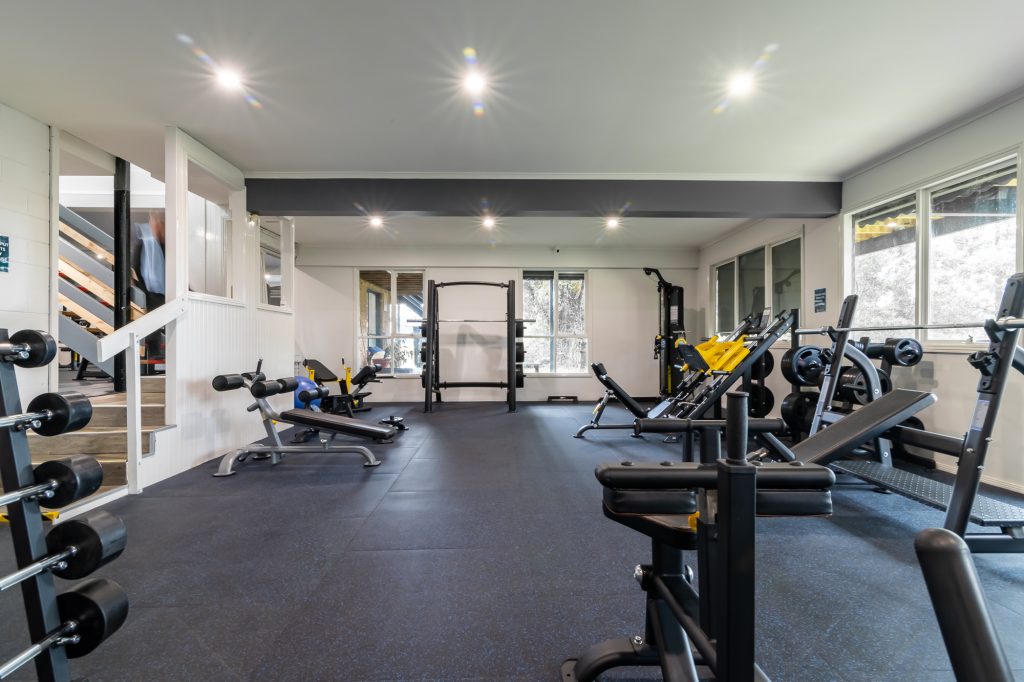
Best Compact Multi-Gym
A compact multi-gym is perfect for small spaces. It combines multiple workout stations in one unit, offering a complete strength training solution.
Why choose it?
- Space-Saving – Fits in a corner without taking up the entire room.
- Versatile Workouts – Includes chest press, lat pulldown, leg extensions, and more.
- Adjustable Resistance – Weight stacks allow smooth progression.
If you want a home gym without multiple pieces of gym equipment, a multi-gym like the Reeplex HG2900 is a great option.
Best for Leg Workouts: Leg Press Machine
For lower-body strength, nothing beats a leg press. It targets quads, hamstrings, and glutes while reducing strain on the lower back.
What makes it a must-have?
- Heavy Lifting with Safety – No need for a spotter. The machine supports controlled movement.
- Back Support – Unlike squats, it reduces pressure on the spine.
- Muscle Isolation – Focuses on leg development without engaging unnecessary muscles.
If leg strength is a priority, a leg press machine is worth the investment.
Best for Full-Body Workouts: Smith Machine + Cable Attachments
A Smith machine paired with a cable system offers total-body training. It combines the stability of guided lifting with the flexibility of cable exercises.
Why is it the best for full-body workouts?
- Safe Strength Training – The barbell stays on a fixed track, preventing imbalance.
- Multiple Exercises – Squats, bench press, shoulder press, rows, and more.
- Cable Versatility – Includes pulleys for isolation moves like triceps extensions and lat pulldowns.
For those who want a full gym experience at home, a Smith machine with cables is the ultimate solution.
Best Budget-Friendly Option: Adjustable Cable Machine
Not everyone has the budget for a full multi-gym. An adjustable cable machine provides a wide range of exercises without the high cost.
Why is it a smart choice?
- Affordable – Costs less than a full home gym setup.
- Compact – Takes up minimal space.
- Great for All Levels – Adjustable height and weight resistance for different exercises.
An adjustable cable machine is a great entry point into machine-based strength training.
Features to Look for When Choosing a Weight Machine
Before buying, consider these factors:
- Size & Space – Measure your workout area to ensure a proper fit.
- Weight Stack or Plate Load – Choose machines with progressive resistance.
- Versatility – Opt for machines that allow multiple exercises.
- Build Quality – Look for sturdy frames, smooth pulleys, and durable cables.
- Ease of Use – Machines should be simple to adjust and operate.
The best machine depends on your needs. Whether you want a compact unit, a full-body trainer, or a budget-friendly option, there’s a weight machine for every home gym setup.
How to Integrate Weight Machines into Your Home Gym Routine
Create a Balanced Workout Plan
A good program includes both upper and lower body strength training. Machines help isolate muscles, but they work best alongside free weights and functional movements.
Strength Training: Upper and Lower Body Splits
- Upper Body Day – Use machines for chest press, lat pulldowns, and shoulder presses.
- Lower Body Day – Focus on leg press, leg curls, and calf raises.
Splitting workouts allows better recovery and muscle growth. Machines provide structure, making it easier to stay consistent.
Combine Machines with Free Weights and Resistance Bands
Machines build strength, but free weights develop coordination and flexibility. Resistance bands improve mobility and joint health.
- Start with machines for controlled strength training.
- Sdd free weights for compound exercises like squats and deadlifts.
- Use bands for warm-ups, stretching, and muscle activation.
A mix of all three creates a stronger, well-rounded fitness routine.
Cardio and Mobility Work to Complement Machine Workouts
Machines don’t train endurance or flexibility. Adding cardio and mobility work fills in the gaps.
Cardio Options: Treadmill, cycling, or jump rope for heart health.
Mobility Work: Stretching and foam rolling to prevent stiffness.
A few minutes of mobility exercises before and after workouts improves flexibility and reduces injury risk.
Final Verdict: Are Weight Machines Worth It for Home Gyms?
Weight machines are a great addition to a home gym. But they’re not for everyone.
Pros:
- Safe and easy to use.
- Great for beginners.
- Allows muscle isolation.
- Provides structured workouts.
Cons:
- Expensive upfront.
- Takes up space.
- Limits natural movement.
- Less effective for stabilizing muscles.
If you are building a home gym, Dynamo Fitness Equipment offers high-quality weight machines and weight benches to fit every need. Whether you want a compact multi-gym, a Smith machine, or a budget-friendly cable system, there’s an option for every space and budget.
Explore our Fitness Equipment range to find the perfect fit for your home gym. Contact our experts for guidance.
